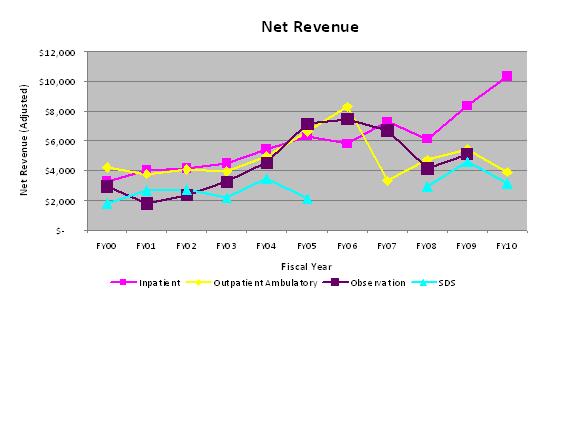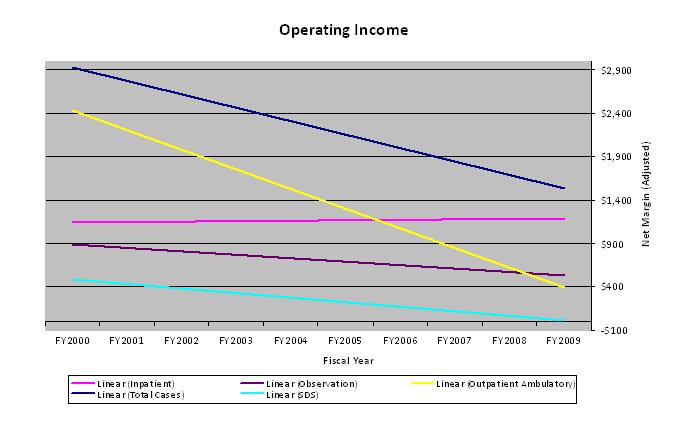|
Back to 2011 Posters
Reduction Mammaplasty Trends: A Quality and Fiscal Analysis Update
Christine M. Blaine, M.D., Christian Subbio, M.D., Sherrine Eid, M.P.H., Robert X. Murphy, Jr., M.D., M.S..
Lehigh Valley Health Network, Allentown, PA, USA.
Backround:
Reduction mammaplasty remains one of the most common procedures performed by plastic surgeons today. In 2003, Chung, et al noted a significant increase in reduction mammaplasty cases with a LOS under 24 hours, without a corresponding increase in readmission or complication rates.
The national healthcare quality and fiscal environments continues to evolve, with increasing emphasis on outpatient procedures and reduced lengths of stay (LOS). This study was designed to analyze the trends in reduction mammaplasty at our institution over the last ten years with particular attention to length of stay, complication rate, and readmission. We also evaluated the institutional fiscal implications with regard to reimbursement in the changing health care environment.
Methods:
Institutional review board approval was obtained for this retrospective chart review. Using Lastword database, analysis of all reduction mammaplasties at our institution over the last 10 years (Fiscal Year 2000-2009) was undertaken. Patient admission status was documented, as well as LOS, mortality, morbidity, and readmission. Surgical admission status was defined as: Same Day Surgery(SDS) - discharged the same day as the procedure, Outpatient Ambulatory- undergoes procedure or receives treatment where discharge is expected in< 24 hours, Observation- has concerning symptoms or signs but does not clearly require acute hospitalization, Inpatient- requires > 24 hours treatment in acute care hospital setting and/or has had a procedure that will require an extended recovery.
A financial analysis was performed comparing trends in hospital revenue and operating income. Revenue was defined as the amount that the hospital received from all sources (insurance, patient payments, etc) for service provided to the patient. Operating Income, on the other hand, was the revenue reduced by all costs incurred to provide services during that patient's stay - both fixed and variable and both direct and indirect.
Results:
1779 patients were identified in this population (SDS =499, outpatient ambulatory or observational=694, and inpatient= 586). Twenty patients were readmitted within 30 days. The all cause 30 day readmission rate was 11.24 per 1000 patients. The disease-specific readmission rate was 5.06 per 1000 patients (n=9). Only 1 patient with disease specific complication requiring readmission had been classified as SDS. No cases of nipple compromise were identified in our study.
Revenue per case was highly variable throughout the study period (Fig. 1). In general operating income has decreased over the last decade, despite a small increase for those patients who were truly inpatient (Fig 2).
Conclusion:
Reduction mammaplasty is a common procedure that is safe when performed on an outpatient basis. Institutional operating income, except in the case of inpatients, continues to decrease and could pose a challenge in the future should present trends continue.
Figure 1

Figure 2

Back to 2011 Posters
|







